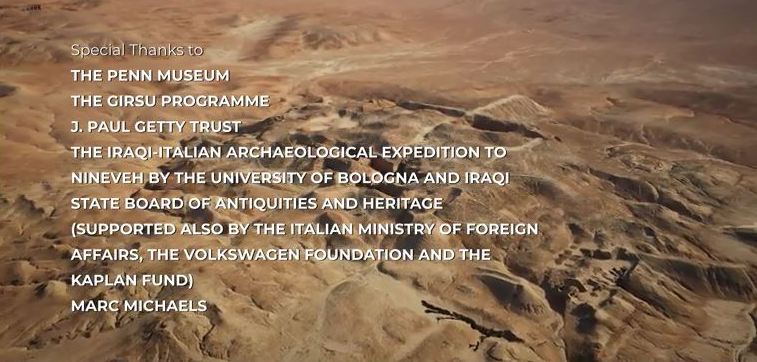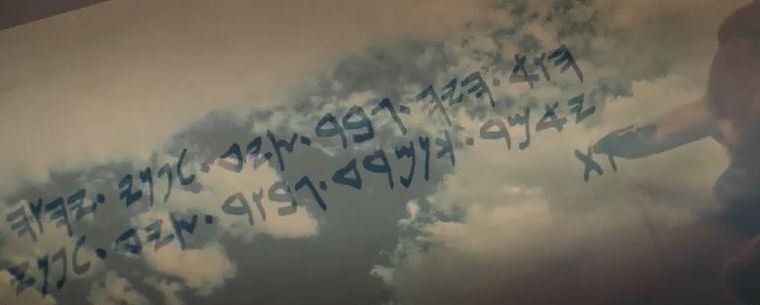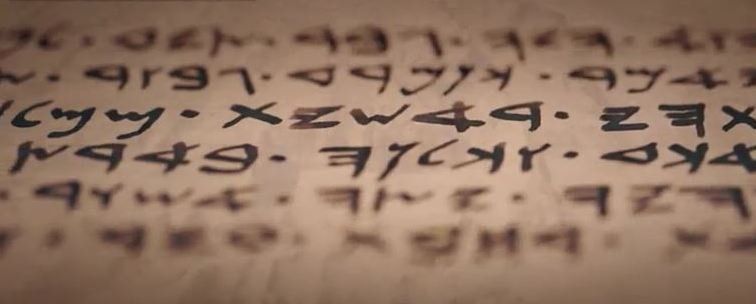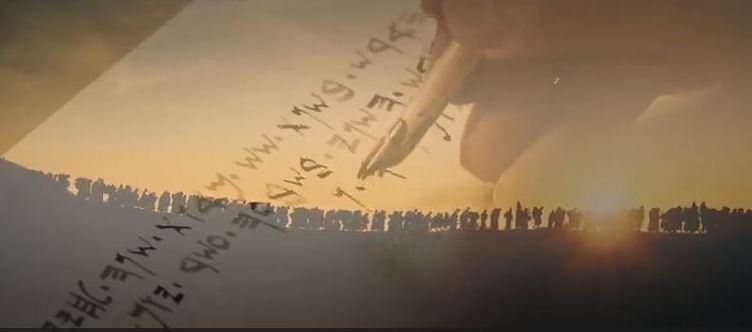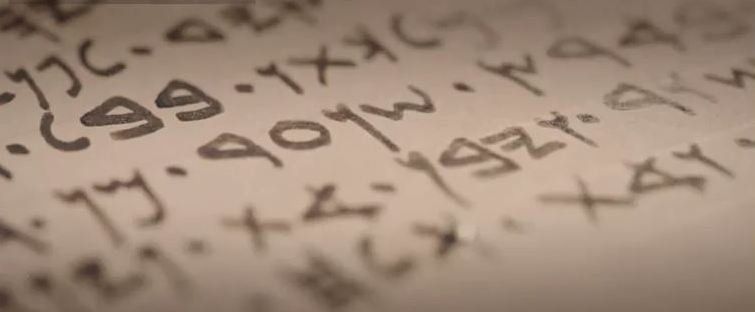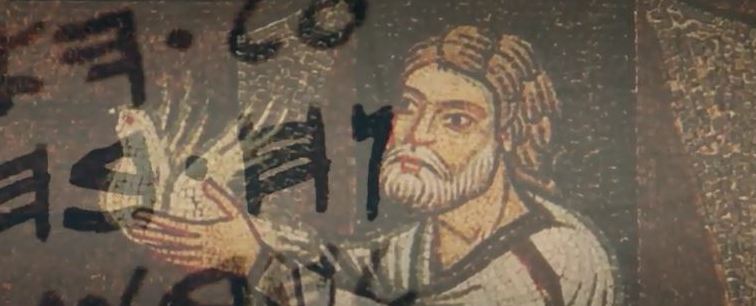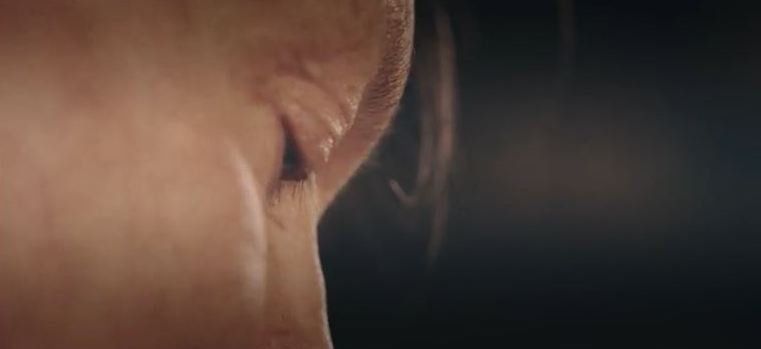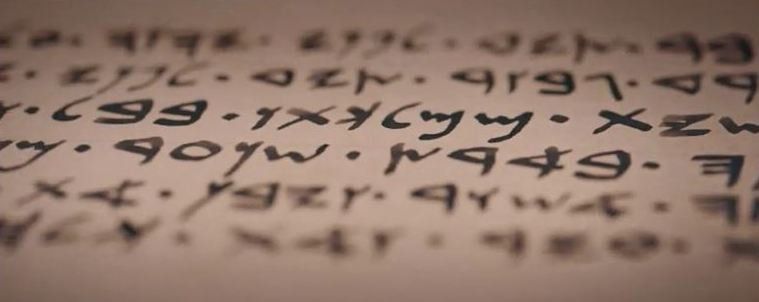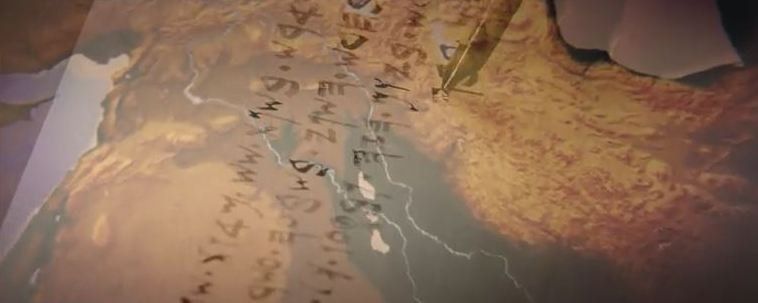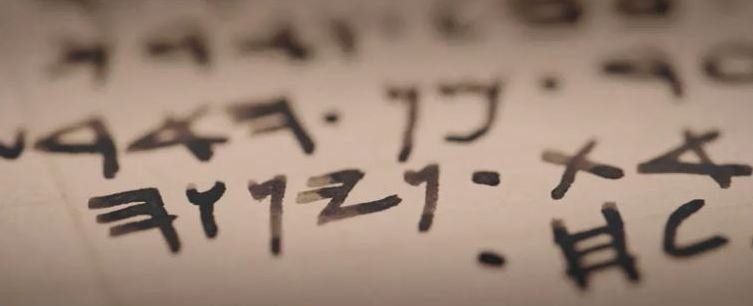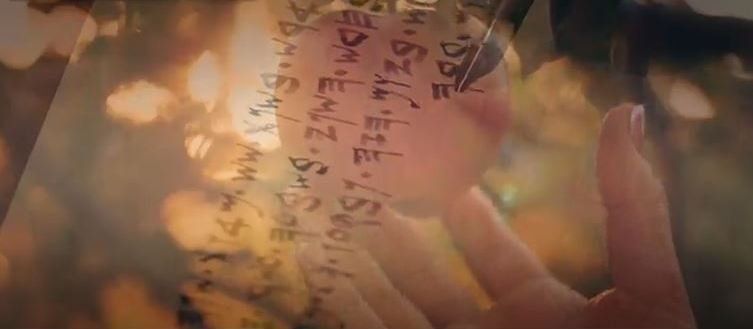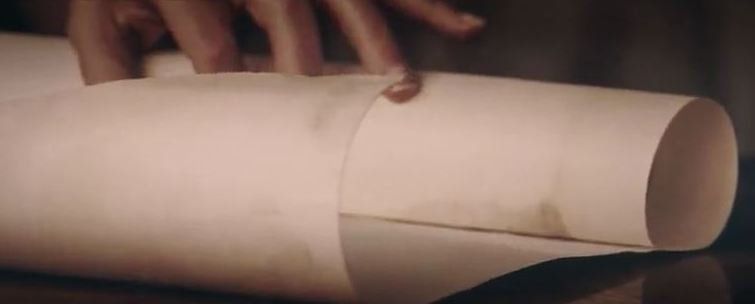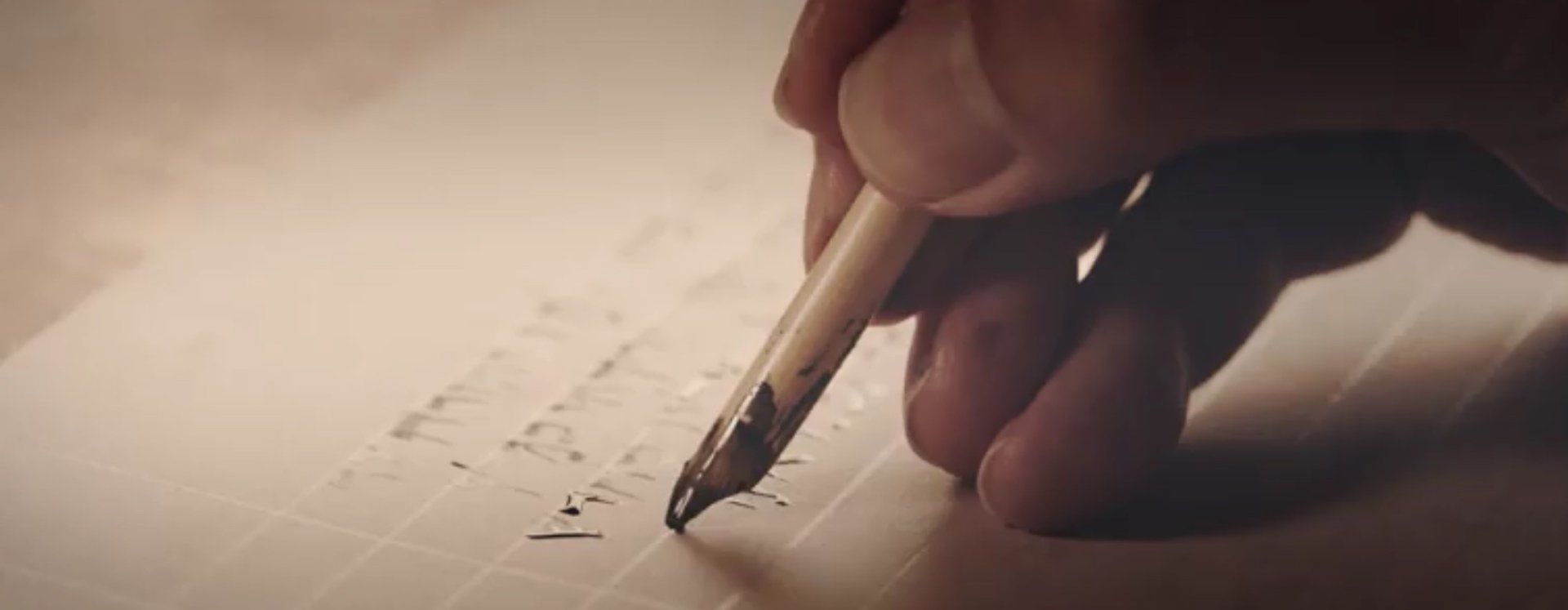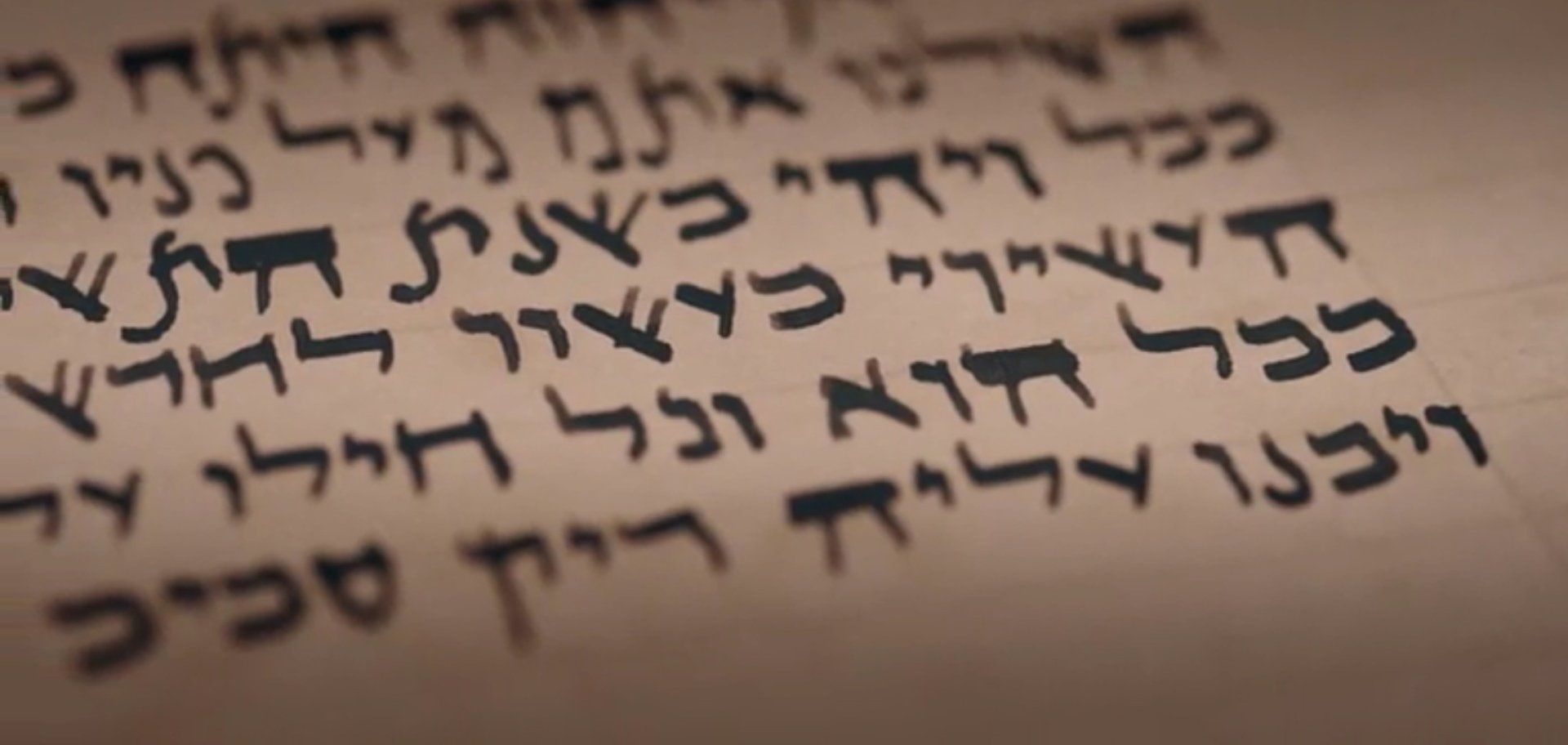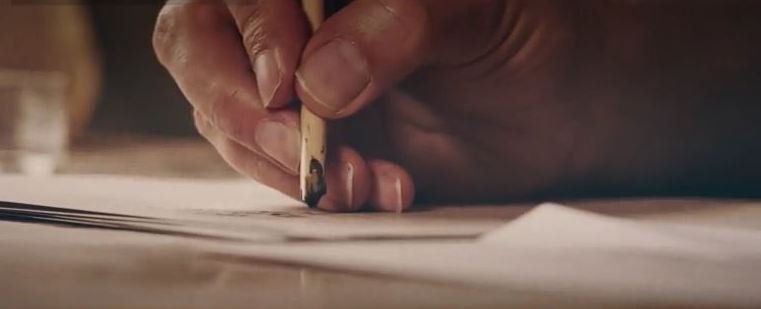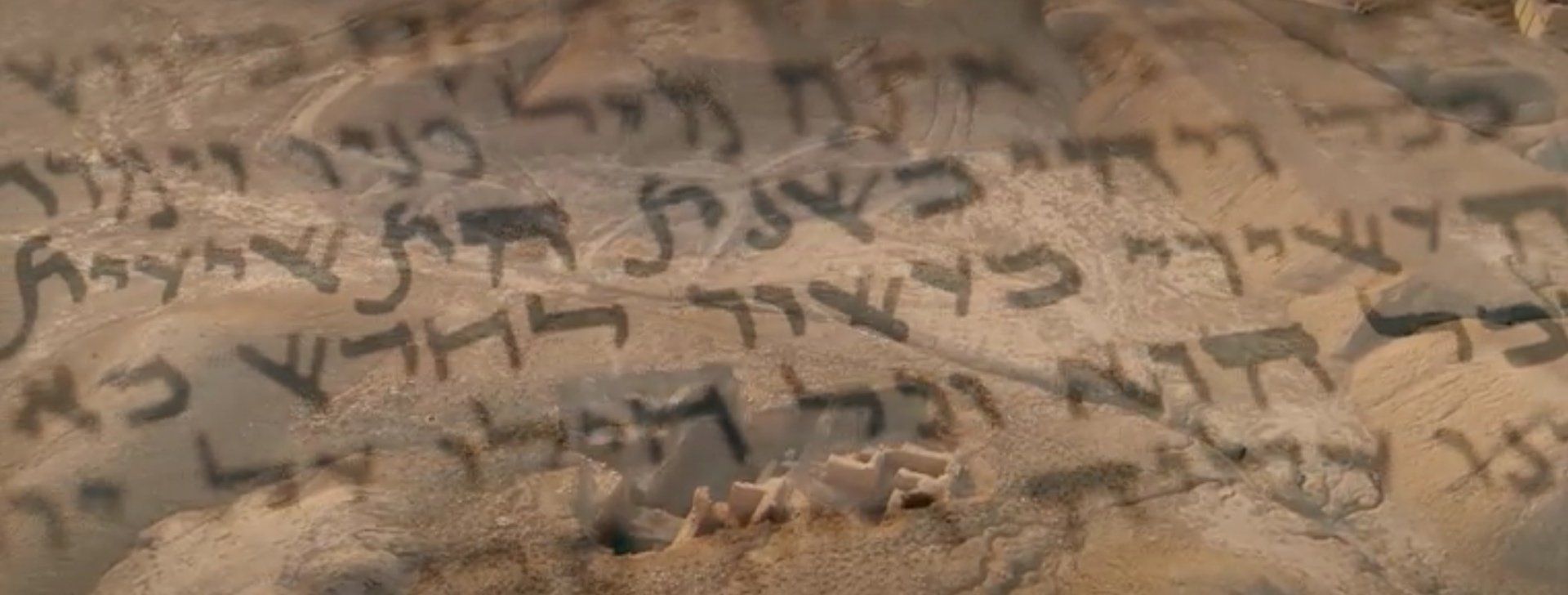
Diary 52 - Being the ancient scribe from the Lost Cities of the Bible
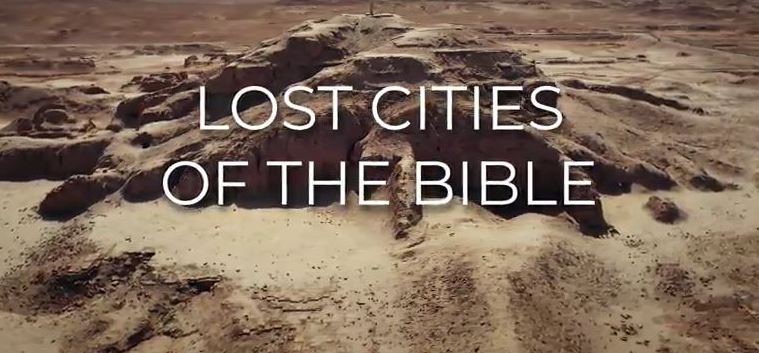
Increasingly my scribal and academic worlds are merging into one. No more so than a little adventure I had in Oxford filming for a documentary about the Lost Cities of the Bible that first screened in the US on Discovery Plus and the Science Channel.
Above: screen grab from the title sequence. Below: rather nice overlay with still wet ink of what will be a paleo Hebrew bet (but looks like a resh mid shot). My thanks to the producers for allowing me to use some screen grabs as there were no production photos from the day.
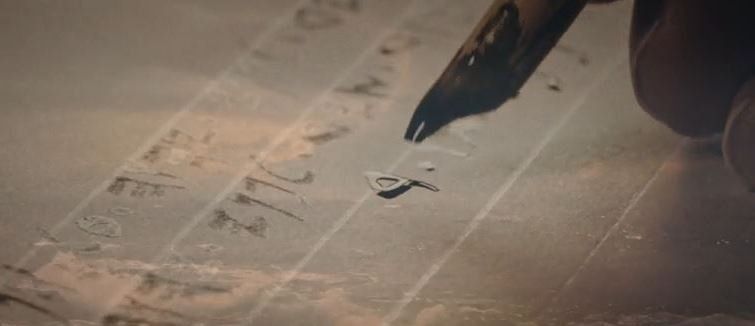
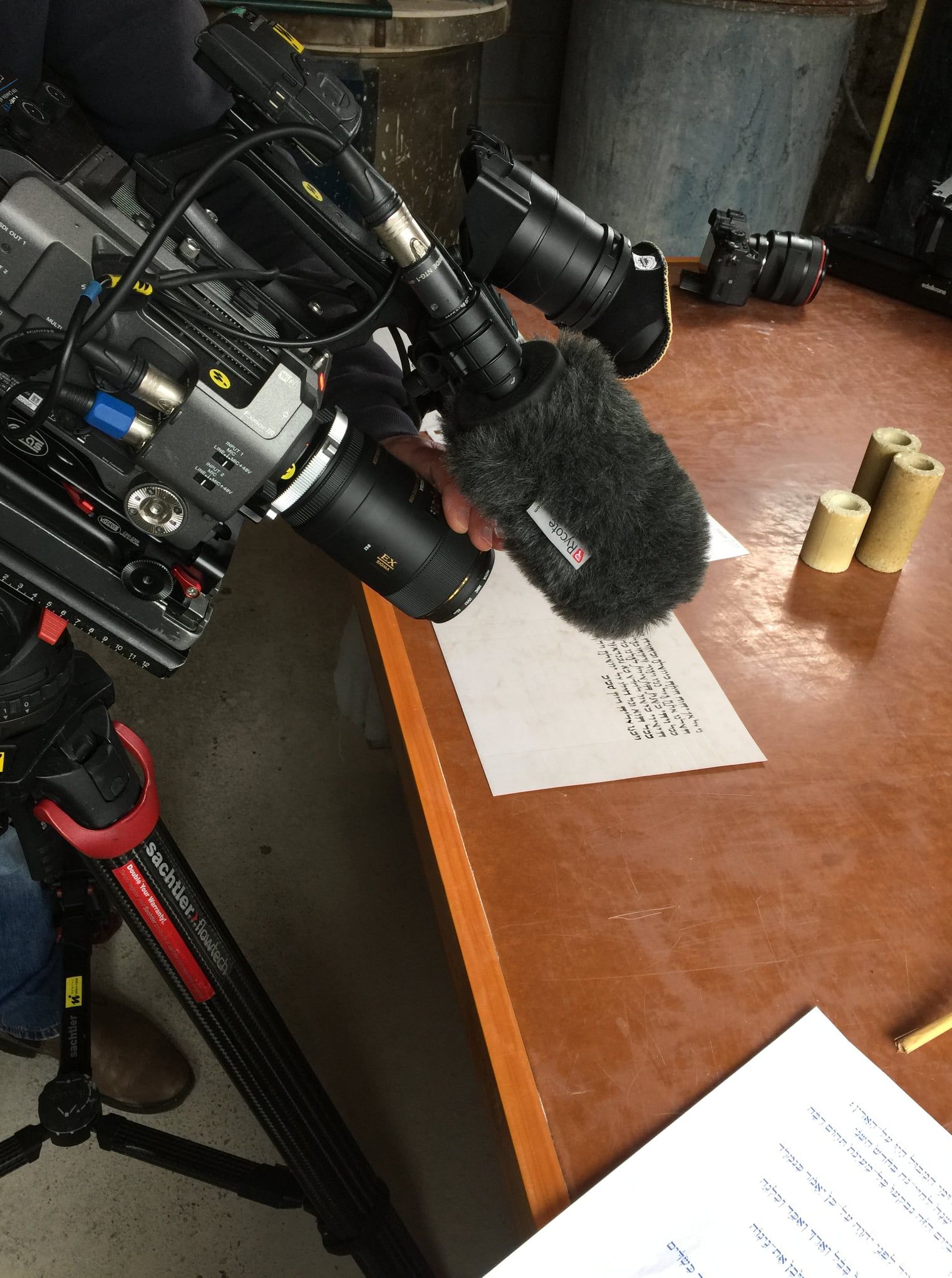
On the day of filming I went to a Pottery place in Oxford (the lady being filmed before me was showing them how to do cuneiform in damp clay, hence the venue - and it was very cool to watch her as well - also featured in the documentaries).
Everything was in close up (hands writing and eyes) as there were no costumes and I don't really look much like an ancient scribe - even tghough I wore a linen short for the occasion just in case it got in shot.
I also ended up chanting the verses for them, but sadly in a modern Ashkenazi trope that I know, as who really knows what it sounded like back then (although my PhD supervisor Prof. Geoffrey Khan has done some excellent work at reconstructing Tiberian pronunciation which I heartily recommend). But that singing found its fate on the cutting room floor and quite rightly so!
The camera on the day focusing in one one of the sheets. Also, a spread showing my kit for the day. Reeds, ink and parchment paper and a roll of parchment for establishing shots. Photos © Mordechai Pinchas/Marc Michaels
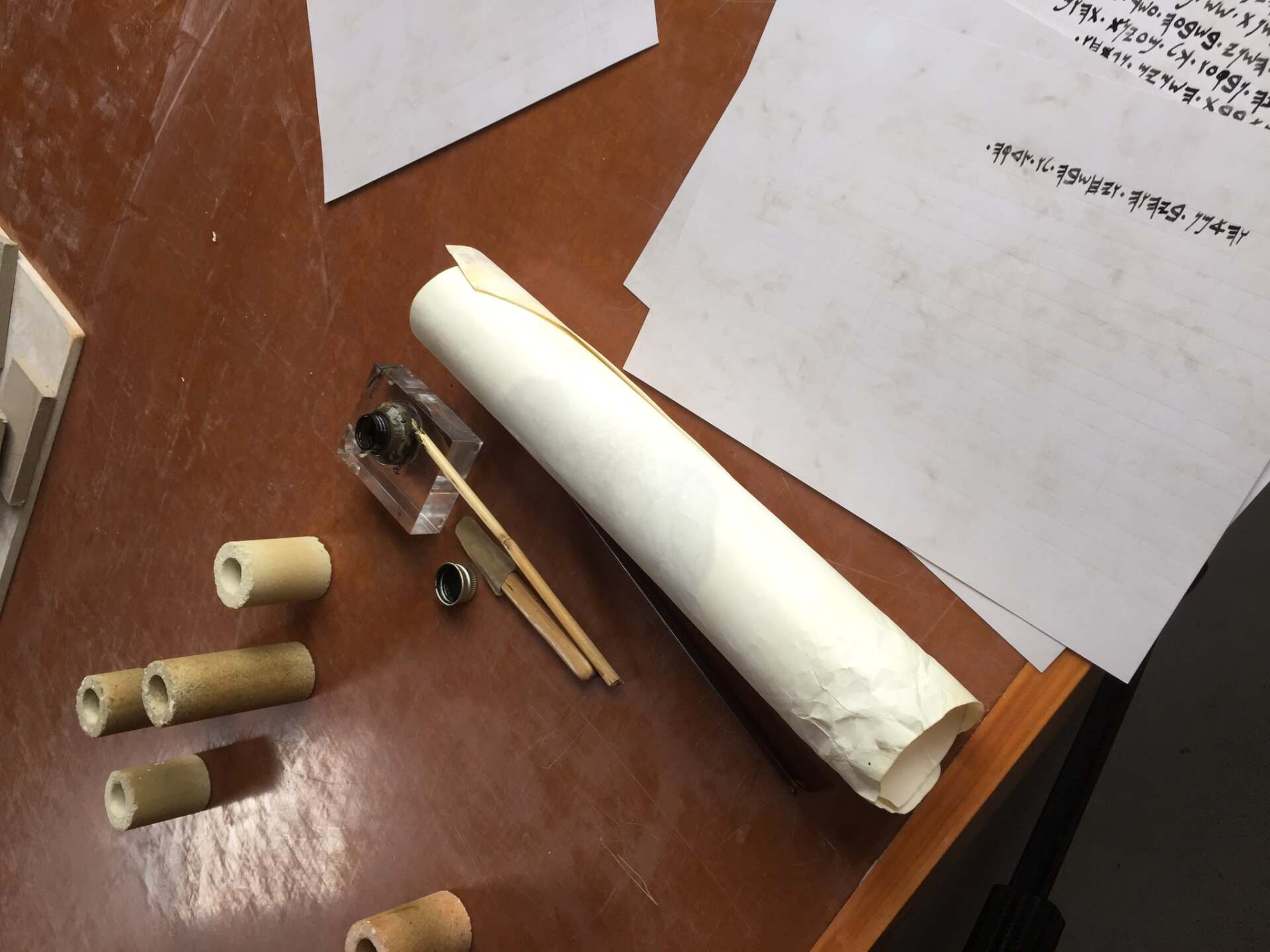
Below: a further series of screen grabs to scroll throughfocusing more on the early form of the ketav Ashurit that featured in the verses from Kings.
I also had to learn the early form of Ashurit in the week before the filming. If anything it was slightly harder as it is closer to modern Hebrew script and so there is a danger of falling into what you know. Also letters like kaf looked more like a nun then and what we see as a kaf was a bet (as it didn't have an eqev (heel) back then).
And for those who are interested the verses I wrote were: Gen. 7:10-7.11 (which references the flood and Noah), Gen. 10:9-10.11 (mentioning Nimrod, Bavel/Babylon, Nineveh, Shinar and Ashur, Gen. 15:6 -15.7 (mentioning Ur Kasdim) and finally 2 Kings 24:20 to 2 Kings 25:1 which mentions Nebuchadnezzer, Babylon again and Yerushalayim/ Jerusalem.
A very interesting adventure filming and quite a lot of footgae made the final edit which is nice to see. And a nice special thank you in the credits.
